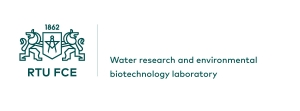Funding source:
European Regional Development Fund (ERDF) project
Duration:
2011- 2013
Collaboration:
University of Latvia and Agricultural University of Latvia
Brief description of the project:
The popularity of biogas as an energy source has significantly grown within the last 15 years in the EU countries. The importance of this area in the economy an energy sectors has been apparent in 20 European countries by producing in total 4265 million tons oil equivalents in 2004 (1). Even if a large part of bulk is composed of biogas obtained from the landfills the reuse of materials of agricultural origin is growing fast. The number of biogas producing utilities in Europe which are associated with agricultural facilities increased from 1500 in 2001 till 2000 in 2004 today being more than 4200 operational plants in Germany. The growing requirements for the environmental and hygiene conditions are the driving force for the development of the area. These are being implemented by the means of new tariffs, taxes and systems of regulations.
When joining EU in 2004 Latvia has undertaken the obligation to produce 49,3% of the domestic electric energy consumption by the year 2010 where a certain part could be made up by the energy obtained from the agricultural biomass processing.
Biomass as a potential energy source attracted attention already in the last century in connection with the pollution and the greenhouse effect and the problem is still current today – also judging from the viewpoint of EU and Latvian policy. This product could be produced quite economically meanwhile avoiding the net emissions of CO2. For instance, biofuel as such is a relatively cheap product where the gross part of expenses is composed by the raw material. If it were possible to design a process successfully utilizing cheap raw material (such as waste products) an economically feasible process is absolutely possible (2). Biofuel holds promise if the shift away from unsustainable biofuels based on grain, such as corn, and toward possible sustainable feedstock and production practices that may be able to meet a variety of social, economic, and environmental sustainability criteria are made (3).Today in Latvia about one million hectares of land are not rationally used thus this land becomes overgrown. These areas could be used to grow energy crops. However, at the same time a large amount of waste is transported to landfills or just deposited elsewhere which, using the correct technology, one could convert to biofuel of any kind, such as biogas.
One of dairy industry waste products is whey. The use of this raw material has not been considered in Latvia. Today this nutrient containing material is, in the best case, used as fertilizer or, in the worst case, disposed of. This waste product would be very suitable for biogas production. However, at the moment, there are no technologies in Latvia which would efficiently produce biogas from whey. Such technologies exist elsewhere unfortunately the technologies cannot be directly transferred to Latvia, as it was shown by the biomethane example, attempted before. The successful transfer should include both the characteristics of the raw material and the fermenting microorganism (or a consortium thereof). The problem which exists all over the world is that the exact content of the consortium producing biogas from the given material and performing with the highest possible yield is not completely known (4).
To sum up – Latvia needs biogas but does not have (i) microbial consortium of a known composition adapted to the production of methane from the local waste materials, (ii) affordable and available technologies for the production of biomethane/other gases and (iii) the problem of deposition of various bio-waste is becoming more and more current.
References:
(1) Biogas barometer, Observ’ER 33, http://www.energies – renouvelables.org June 2005
(2) Szengyel , Z. (2000) Ethanol from wood -cellulase enzyme production. Ph.D. thesis, Lund University, pp. 53.
(3) Solomon BD. Biofuels and sustainability. (2010) Ann N Y Acad Sci. 2010 Jan;1185:119-34.
(4) Das, D., Veziroglu, T.N., 2001. Hydrogen production by biological process: a survey of literature. “Int J Hydrogen Energy” 26, 13-28.
The general aim of the Project is to develop technologies available in Latvia and abroad for economically feasible utilization of agricultural and dairy waste with emphasis on the waste-free cycle. The technologies will be as economical as possible and thus affordable by many end-users both in Latvia and abroad. As the recyclable waste (i) the end-products from the agricultural industry (e.g. manure) and (ii) dairy industry (whey) will be transformed to biomethane and biohydrogen.
